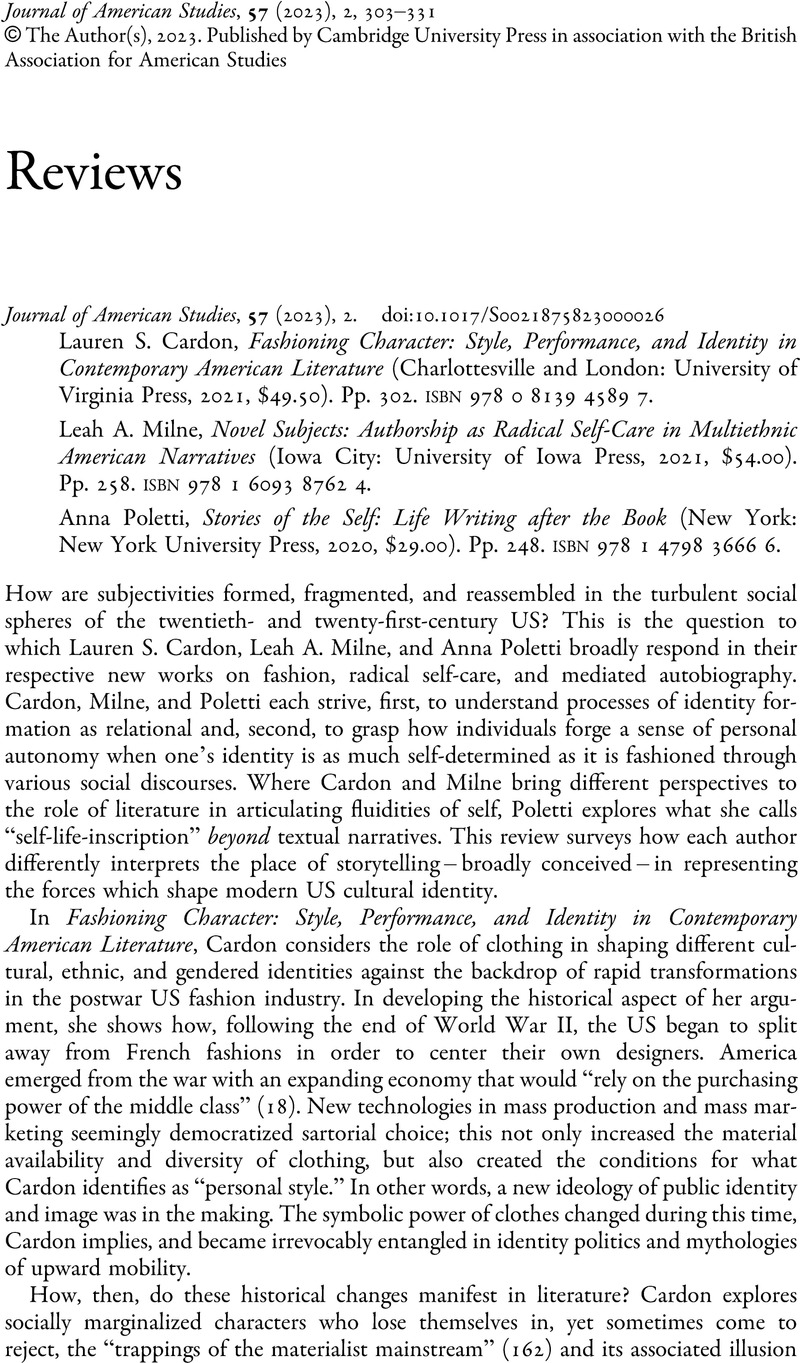No CrossRef data available.
Article contents
Lauren S. Cardon, Fashioning Character: Style, Performance, and Identity in Contemporary American Literature (Charlottesville and London: University of Virginia Press, 2021, $49.50). Pp. 302. isbn 978 0 8139 4589 7. - Leah A. Milne, Novel Subjects: Authorship as Radical Self-Care in Multiethnic American Narratives (Iowa City: University of Iowa Press, 2021, $54.00). Pp. 258. isbn 978 1 6093 8762 4. - Anna Poletti, Stories of the Self: Life Writing after the Book (New York: New York University Press, 2020, $29.00). Pp. 248. isbn 978 1 4798 3666 6.
Review products
Lauren S. Cardon, Fashioning Character: Style, Performance, and Identity in Contemporary American Literature (Charlottesville and London: University of Virginia Press, 2021, $49.50). Pp. 302. isbn 978 0 8139 4589 7.
Leah A. Milne, Novel Subjects: Authorship as Radical Self-Care in Multiethnic American Narratives (Iowa City: University of Iowa Press, 2021, $54.00). Pp. 258. isbn 978 1 6093 8762 4.
Anna Poletti, Stories of the Self: Life Writing after the Book (New York: New York University Press, 2020, $29.00). Pp. 248. isbn 978 1 4798 3666 6.
Published online by Cambridge University Press: 19 April 2023
Abstract
An abstract is not available for this content so a preview has been provided. Please use the Get access link above for information on how to access this content.

Information
- Type
- Review
- Information
- Journal of American Studies , Volume 57 , Special Issue 2: Food, Health and Welfare in the Long Twentieth Century , May 2023 , pp. 303 - 309
- Copyright
- Copyright © The Author(s), 2023. Published by Cambridge University Press in association with the British Association for American Studies


